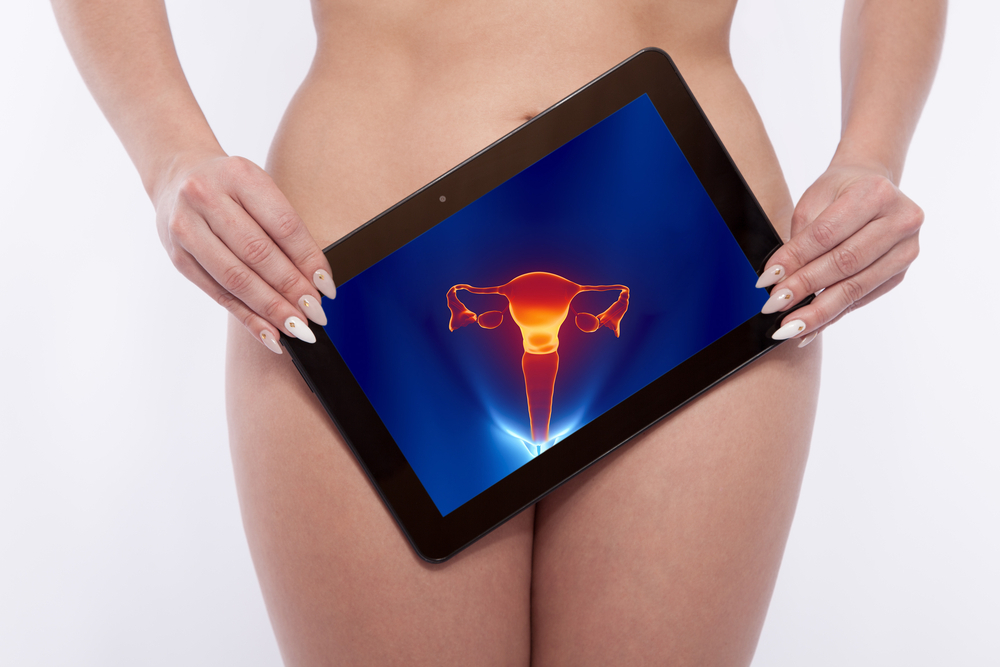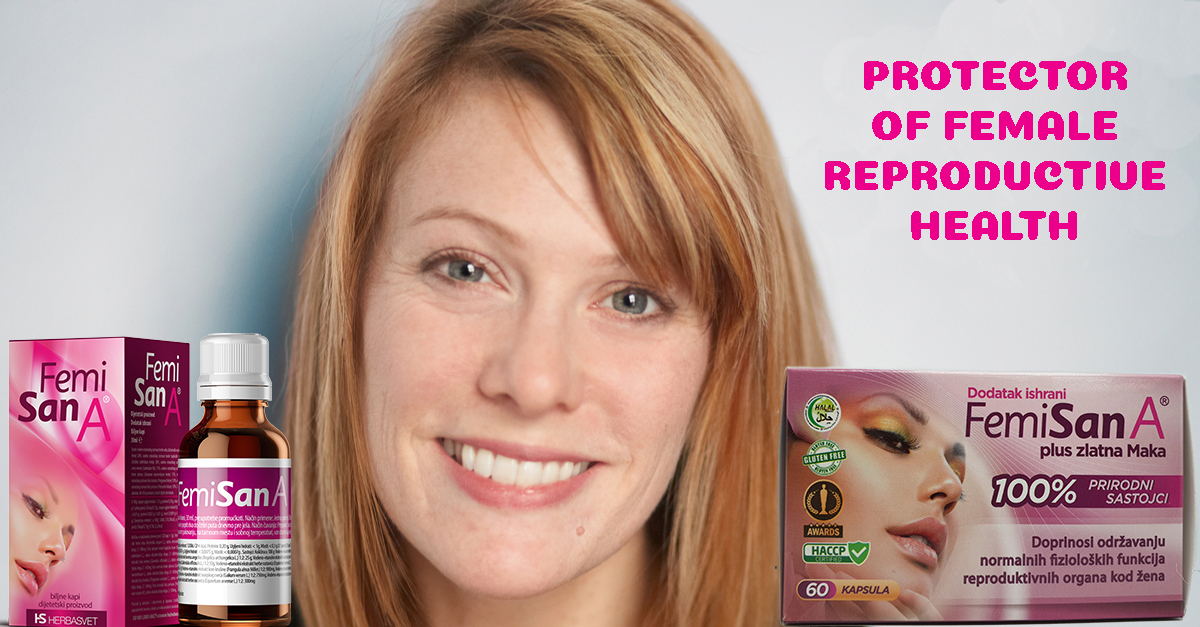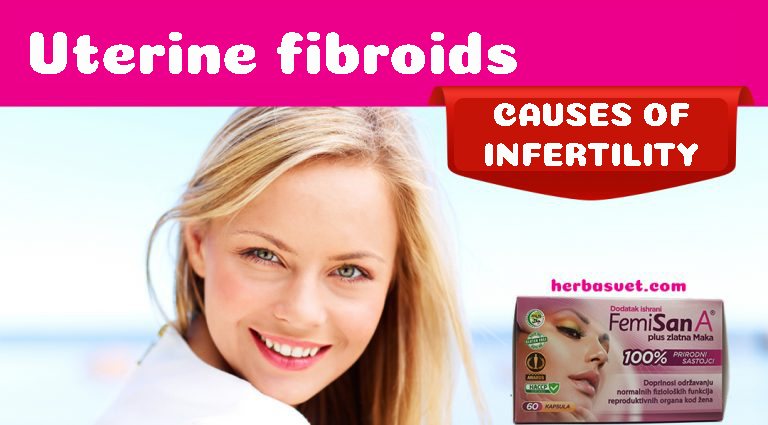Uterine fibroids are the most common benign tumours; they affect one in four women, mostly during their reproductive period. The cause of fibroids is not completely known, but it is known that their growth is stimulated by the hormone oestrogen, which changes the structure of smooth muscle cells of the uterus. More than one usually occur, they appear most often in women between 35 and 50 years of age and stagnate or decrease after menopause. According to some statistics, women who have not given birth, obese women with a body mass index over 30, women who had their first period prematurely, women with polycystic ovary syndrome (PCOS) and those who suffer from hypertension are at a higher risk of getting fibroids.
A majority of women are not even aware that they have fibroids because the symptoms depend on the place on the uterus where they appear, so sometimes the symptoms are completely absent, and the diagnosis of fibroids is detected during regular gynaecological screening and ultrasound tests. But sometimes they can significantly impair the quality of life, cause pain and pressure in the abdomen and heavy menstruation that lasts longer than usual. Fibroids usually grow on the external or internal walls of the uterus; the external ones can press on the bladder, cause urinary incontinence, frequent urination, or make urination difficult. If they appear on the back of the uterus, they can put pressure on the surrounding organs, especially the rectum, and thus disrupt bowel movements, or cause pain in the small pelvis and the back. They rarely occur on the cervix; the most complicated ones are those that grow inside the uterus, because they can cause irregular, heavy, prolonged and heavy menstruation, which then causes anaemia. This is exactly one of the biggest problems for women who are trying to conceive. Fortunately, fibroids very rarely turn into cancer, but that is not a reason to neglect them; on the contrary, regular gynaecological examinations and adequate prescribed therapy are necessary.

UTERINE FIBROIDS AND INFERTILITY
Fibroids can definitely cause infertility. Studies have shown that fibroids are present in 5 to 10 per cent of women who suffer from infertility, and that they can be a direct cause of infertility. These benign growths can interfere with egg transport through the fallopian tubes, but today we know that some of the critical factors are distortion of the endometrium, which results in a womb that is unable to accept a fertilised egg, as well as endometrial development disorder – intramural fibroids: those that grow inside the uterine wall, that are larger than 4 cm and can adversely affect fertility, even if they do not cause uterine distortion.
Although there are several theories on how fibroids affect infertility and research is still ongoing, what is certain is that they affect the possibility of embryo implantation and create a “hostile environment” for the development of future life. In some cases, removal of fibroids has improved the chances of conception, even up to 50 per cent. And when it comes to assisted conception, studies have shown that fibroids have a lower implantation rate.
When pregnancy does occur, fibroids increase the likelihood of miscarriage. Fibroids, therefore, reduce the possibility of implantation, increase the risk of miscarriage and increase bleeding.
Another obstacle in women with fibroids who are trying to conceive is created by hormones. Today we know that the appearance of fibroids is associated with hormonal imbalance. In particular, a combination of elevated levels of testosterone and oestrogen in middle-aged women has been proven to cause fibroid growth, according to a study conducted on 3,240 respondents. Another risk factor for fibroids are oestrogen-based contraceptives or hormones given during menopause. Although this study looked at women entering menopause, the link between hormones, fibroids and conception is very clear. One study has proved that therapy with LHRH agonists (luteinising hormone-releasing hormone), can increase the chances of conception.
Another hormonal link associated with fibroids is the one that involves the thyroid gland. A study has proven that thyroid nodules plus oestrogen trigger the growth of fibroids. In addition to the association of thyroid nodules and fibroids, fibrocystic changes in the breasts are also related to them. Results of this research are not surprising: the human body is a complex machine and everything in it is interconnected.

UTERINE FIBROIDS IN PREGNANCY
Another proof of the association of fibroids and hormones is the fact that fibroids often occur in pregnancy, and are known to be stimulated by human chorionic gonadotropin, a hormone secreted by the placenta, in which case their surgical removal is especially risky. Fibroids during pregnancy can grow especially during the second and third trimesters and may cause premature birth or miscarriage. After childbirth, heavy bleeding is possible, which endangers the mother’s life. Some of the associated problems are placental abruption, bleeding in the first trimester, difficult delivery and breach presentation delivery. Fibroids also increase the risk during cesarean delivery.
Uterine fibroids in pregnancy can grow rapidly and cause intense pain, but fortunately in most cases, as much as 72 per cent, there is a reduction in fibroids after childbirth.
Also, after childbirth, it was noticed that breastfeeding can play a role in reducing fibroids.
Some studies have concluded that pregnancies that occur in the presence of fibroids must be considered high-risk and that the condition should be monitored closely even though the pregnant woman may not feel any symptoms.

BURSTING OF FIBROIDS, SYMPTOMS
Although fibroids in themselves are not dangerous – they are not life-threatening, if fibroids burst urgent medical attention is required. Fibroids that grow on small “stems” on the inner or outer walls of the uterus are more prone to bursting than those inside the wall. A rupture can occur due to the fact that the fibroid “has outgrown” the amount of blood that it receives, which feeds it through blood vessels, as well as due to high abdominal pressure, due to injury or increased pressure in the veins during pregnancy. What are the symptoms of fibroid rupture? These include severe lower abdominal pain, fever and elevated white blood cell counts; major complications include thromboembolism, fibroid torsion, urinary retention, renal failure and major internal bleeding.
Although internal bleeding due to spontaneous rupture of fibroids is rare, it should be treated seriously as a possible source of bleeding when establishing a diagnosis.
Evidence that fibroids depend on the hormone oestrogen is found in the fact that they decrease in menopause. In women who are approaching menopause or are already there, if fibroids do not cause complications, they are usually not touched, but only monitored. As the oestrogenic effect is lost in post-menopause, the growth of fibroids decreases and they may even disappear completely.
If uterine fibroids do not cause a major problem, it is enough to check them regularly. The gynaecologist will be able to determine the position and size of fibroids very precisely with an ultrasound examination. If they cause pain or disable any of the bodily functions, therapies are used to treat them, unless the gynaecologist deems that surgery is necessary. There are several ways to surgically treat fibroids. Myomectomy involves the removal of a fibroid that is causing the problem with classic surgery or through keyhole surgery, which is a minimally invasive method. In case of major complications, a hysterectomy is performed, which involves the removal of the entire uterus. Today, there are more modern methods – ultrasound treatment, which affects the reduction of fibroids and thus reduces bleeding, or embolisation of fibroids, which cuts blood flow to this benign tumour of the uterus, which causes it to gradually dry out and die.
Whether uterine fibroids cause symptoms or not, they must not be ignored. The best thing, in fact, is to never get them. That is why we need to start from the core of the problem, from oestrogen. And here we return to the story of hormones: as most “female” problems, including fibroids, are caused by hormonal imbalance, it is important to make sure that hormonal imbalances do not occur. Disruption in the balance of one hormone causes a domino effect in the whole body. Therefore, we have to maintain or restore balance to our body. We will achieve this best with a healthy diet, regular physical activity and with the help of phytotherapy. Femisan A drops and capsules naturally contribute to hormonal balance and affect the normalisation of the menstrual cycle. With regular gynaecological check-ups, Femisan A and a healthy lifestyle, we will slow down or completely stop the growth of fibroids. By adopting a proper lifestyle, a healthy diet rich in vitamins and minerals (especially iron, which is lost through prolonged bleeding), we will not only regulate gynaecological problems, but we will restore our physical and mental balance.

